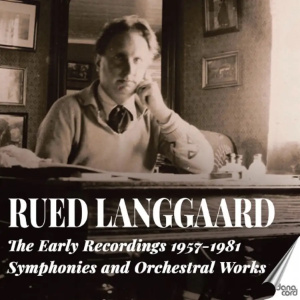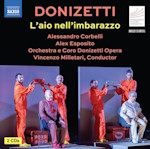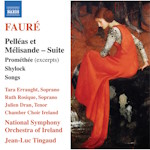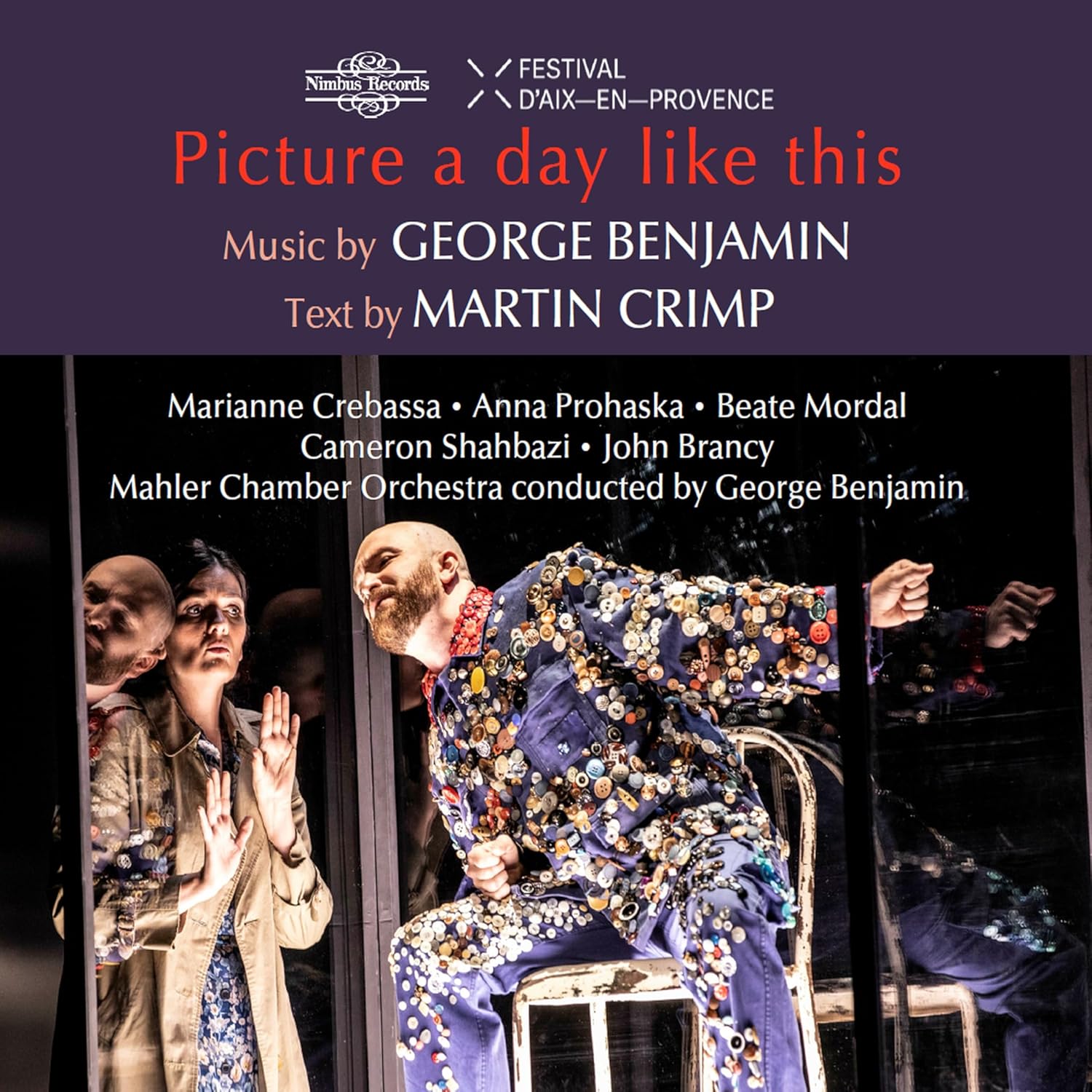
Rued Langgaard (1893-1952)
The Early Recordings 1957-1981: Symphonies and Orchestral Works
No texts
Danacord DACOCD976 [2 CDs: 151]
Though several of these performances may seem familiar, in fact only Kai Laursen’s recording of the Violin Concerto and Launy Grøndahl’s 1957 studio performance of Drapa (on the Death of Edvard Grieg) have been released before. Everything else is making a premiere appearance on disc. The twofer is, as ever with Danacord’s historic series, priced as-for-one.
Not only that but it offers a broad ranging conspectus of Langgaard’s radio recordings over a period of a quarter of a century. Danish Radio was the principal motor in the restoration of the composer’s reputation over the years and the commercial recordings that followed owe a great deal to the radio corporation’s doggedness and persistence and also to the skill of the conductors involved.
The first disc contains three symphonies, numbers 4, 6 and 16. No.4 Løvfald or ‘Leaf Fall’ was recorded in a studio production by John Frandsen on 2 April 1981. It appears not to be the same performance that appeared on Danacord 560 as I think that one is a live recording and this one is a studio production. Frandsen had recorded the symphony commercially in 1973 in any case. This is a nature symphony, sectional, full of rustle, thud and shafts of sunlight as Langgaard threads the music from innocence to impending storm to melancholy. With languid writing to balance the pounding percussion at the end Frandsen suggests a more measured depiction than Thomas Dausgaard, with the same orchestra, in his 2001 recording, though Frandsen is only a little quicker than Neeme Järvi, again with the heroic Danish Radio Symphony.
Two decades earlier Martellius Lundquist recorded the Sixth Symphony, Det Himmelrivende or ‘The Heaven-Rending’ in a DR studio production. Like the Fourth, the Sixth Symphony is cast in a single movement though it is effectively a sequence of two themes, the first rather beautiful, the second more unstable, and a series of variations. As so often with the composer the initial themes inaugurate a fluctuating series of states either formal – a jagged Fugue, for instance, is immediately followed by a Toccata – or expressive, with darkness following light. The work culminates in a grimly argued percussion-laced Coda. This is one of Langgaard’s most internationally performed symphonies and almost all conductors cohere around Lundquist’s timing – 21:30, though Järvi is rather quicker.
Straussian opulence courses through Symphony No.16, subtitled ‘Deluge of Sun’ in which the figure of Till Eulenspiegel can be sensed from time to time along with robust horn writing. There’s a sparkling sliver of a Scherzo and a resumption of the rich romanticism in the ‘Punishment Dance’, where some audience rustling can be heard. After a sensitively balanced Elegy the work bursts into renewed Straussian overdrive for a brisk summation in the finale. This was the work’s premiere given on 16 March 1966 with the orchestra conducted by Francesco Cristofoli. When he came to record it, Thomas Daugaard shaved a couple of minutes off Cristofoli’s timing but it remains a fine, dedicated and sonically warm reading.
The second disc contains the already-released Concerto and Drapa (On the Death of Edvard Grieg) – reviews of both can be found on this site – but also includes Hvidbjerg-Drapa, a late work composed in 1948 and heard in a studio performance given a decade later by Ernst Hye-Knudsen. This is a brief, taut and powerfully Straussian work for which the composer added an 11-bar chorus after the work was accepted for performance by Danish Radio which DR refused to perform either in the 1950 world premiere or in this Hye-Knudsen performance.
The Suite from A Poet’s Dream comes from the mid-1920s and is light and airy, divorced from the heavyweight symphonic or orchestral impulses to be heard elsewhere in this twofer. It’s performed by the Aalborg Symphony Orchestra under Alf Sjøen in this 1969 broadcast. The strikingly brooding Interdict of 1947-48 is for organ soloist, here Grethe Krogh, and the same forces as above, this time heard in a studio production from April 1970. It’s a two-movement work, the first taut and exuberant and the second much more extensive, a touch sepulchral and then incrementally triumphant. It’s splendidly performed here.
The final work is probably his most dramatic, original and striking, The Music of the Spheres performed in this 1971 studio performance by soprano Margrethe Danielson with the Danish National Symphony Orchestra under John Frandsen. Dissonance supersedes melody and traditional concepts of harmony in this still, brooding, dappled, dramatic half-hour work in which silence and subtle refinement are the primary engines of the music, the organ and percussion, the chorus and solo singing of Danielson adding their own voicings. Frandsen led a DR concert performance with some cuts as well as the complete version heard in this studio reading.
The fine notes are dual language, in Danish and English, by Bendt Viinholt Nielsen. The restoration and mastering of these performances have been carried out with great care and they sound in first-rate condition. Those who have the complete Langgaard symphonies on Danacord, for instance, may well want to acquaint themselves with these historic antecedents as they have a spirit of rediscovery that proves not merely valuable but compelling.
Jonathan Woolf
Buying this recording via a link below generates revenue for MWI, which helps the site remain free


Contents
Symphony No.4 ‘Leaf Fall’, BVN124 (1916 rev1920)
Danish National Symphony Orchestra/John Frandsen
rec. 2 April 1981, studio production
Symphony No.6 ‘The Heaven-Rending’, BVN165 (1919-20 rev 1928-30)
Danish National Symphony Orchestra/Martellius Lundquist
rec. 20 May 1961, studio production
Symphony No.16 ‘Deluge of Sun’, BVN417 (1950-51)
Danish National Symphony Orchestra/Francesco Cristofoli
rec. 16 March 1966, live performance (premeire)
Drapa (On the Death of Edvard Grieg), BVN20 (1907 rev 1909)
Danish National Symphony Orchestra/Launy Grøndahl
rec. 5 May 1957, studio performance
Hvidbjerg-Drapa, BVN343 (1948)
Danish National Symphony Orchestra/Ernst Hye-Knudsen
rec. 10 June 1958, studio production
Violin Concerto, BVN289 (1943-44)
Kai Laursen (violin)/Odense Symphony Orchestra/Askel Wellejus
rec. 8 February 1968, DR studio production
Suite from ‘A Poet’s Dream’, BVN181 (1924-26)
Aalborg Symphony Orchestra/Alf Sjøen
rec. 21 October 1969, DR studio production
Interdict, BVN335 (1947-48)
Grethe Krogh (organ)/Aalborg Symphony Orchestra/Alf Sjøen
rec. 17 April 1970, DR studio production
The Music of the Spheres, BVN128 (1916-18)
Margrethe Danielson (soprano)/Danish National Symphony Orchestra/John Frandsen
rec. 21 January 1971, studio production

















